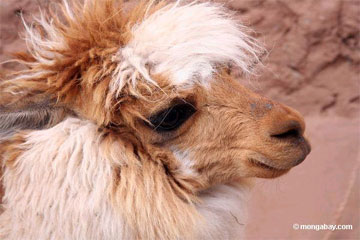High fashion driving conservation efforts of rare species?
High fashion driving conservation efforts of rare species?
mongabay.com
February 21, 2007
Whimsical tastes of the fashion industry are sometimes blamed for the depletion of rare wildlife. The shatoosh craze of the 1980s and 1990s led to severe declines in population of the Tibetan antelope or chiru, while a current resurgence in tiger fur fashions in China has put further pressure on the endangered cat. Demand for rhinoceros horn to adorn decorative dagger handles in Yemen and Oman has driven some wild rhino populations to the brink of extinction. Further, rare animals are in some countries viewed as a delicacy: hence the consumption of clouded leopard and sun bear in China and gorilla in African cities. With this dismal record, Is it possible that fashion could ever drive the recovery of a species? A new article in The Wall Street Journal suggests this may be occurring in South America with the vicuña, a diminutive llama that lives high in the Andes.

Llama in Peru. |
Loro Piana, a high-end Italian fashion label, uses vicuña wool in its most expensive designs. Its demand, once exclusive, for the high-priced product, which is softer than sheep wool, has coincided with a steady rise in the population of the once endangered species. Once farmers saw the value of the vicuña wool ($400-500 per kilogram [2.2 pounds]), herds became a valuable resource that had to be protected. Since vicuña wool is harvested from live animals — not pelts as with some other threatened species — the trade did not diminish their numbers and further spurred captive breeding and conservation efforts. The vicuña population has roughly doubled in Peru since a ban on their trade was relaxed, according to The Wall Street Journal. The article notes that the quasi-monopolistic control of the market — and pricing — by Loro Piana (it has 60-70 percent of the market) has helped boost populations since farmers can only “raise revenue by increasing the size of their herds”.
Citation: “Seeking Edge, Fashion Firm Bets on Rare, Furry Animals” by Stacy Meichtry. The Wall Street Journal February 21, 2007; Page A1.